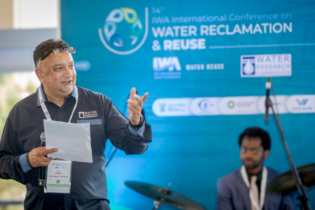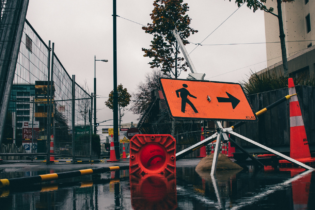
The controversial Elandsfontein Phosphate Mine. Photo: BRAAF Environmental Practitioners
The Municipality’s surprise decision follows an equally unexpected earlier announcement by Kropz that it would delay – for an extended period – mining at Elandsfontein due to a delay in the issuing of the mine’s water use license and technical issues identified during commissioning.
Technical issues causing a delay
Carika van Zyl, chairperson of the West Coast Environmental Protection Association (WCEPA), which has opposed the mine from the outset due to the threat it poses to the eco-systems and livelihoods dependent on the Elandsfontein aquifer and the Langebaan Lagoon, says of the latest developments:
“We believe that at least two of the ‘technical issues’ to which Kropz refers in its 15 August statement announcing the delay, are:
- The Saldanha Bay Municipality is unable to provide the 1.6 million litres per day it promised to the mine, and Kropz’s Water Use License (WUL) prohibits it from removing water directly from the aquifer. Under the new arrangement, the municipality will be able to provide water for industrial use, and the Elandsfontein mine with the very water abstracted from the mine as a ‘water service’ to effectively circumvent the prohibition in the WUL.
- As expected by several water experts, the reinjection wells into the aquifer are ostensibly not working as well as planned. The new arrangement instantly solves the considerable problems this presents in that Kropz is able to use the municipality’s water infrastructure as a convenient alternative to relay water extracted during the daily mine dewatering process. Kropz has been attempting to artificially recharge the aquifer with the water generated as a result of the dewatering.”
Drinking water taking a back seat to industry
Walter Anderson, Senior Associate at Cullinans & Associates, the law firm representing the WCEPA in its fight against Kropz, says: “It is notable and concerning that the Saldanha Bay Municipality’s resolution focusses almost exclusively on how the drought affects industry, when one would expect drinking water and sustainable use of water resources to be the first priority.
“The Constitution provides people with a right to sufficient water, and Saldanha Bay Municipality should only draw from sensitive water resources held in public trust to ensure that people have drinking water, but emergency procedures are not meant to bail out water intensive industries that should not have been established in an area without excess water in the first place.”
The Elandsfontein aquifer is 5 to 10 million years old and is a cornerstone of the economy and biodiversity of the West Coast Biosphere.
In a fact sheet released earlier this year, Kropz stated that their plans and processes have been designed to minimise and optimise water usage. “The company’s approach to water usage is, we believe, innovative and will have a net positive impact on the water availability and usage in the region.”








